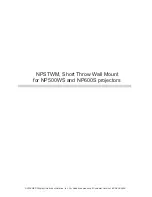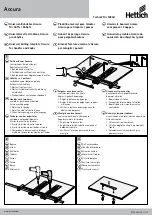
24
MS MT KK EN 180103
Conventional Ploughs MS/MT
5. DRIVING A CONVENTIONAL PLOUGH
5. DRIVING A CONVENTIONAL PLOUGH
Road transport:
Always remember that a relatively considerable weight is resting on
the rear axle of the tractor. To ensure that the tractor retains its steering
properties, fit front weights as required.
Driving speeds,
Adapt driving speed to the road conditions so that the plough does not
transport:
bounce behind the tractor. This could alter the plough settings and
impose abnormal stresses on it.
Ploughing:
Adapt ploughing speed to the prevailing ground conditions and
presence of stones.
NOTE: Excessively high speed costs money in terms of wear and
damage to equipment.
Transport:
Maximum transport speed 25 km/h (16 mph)
USEFUL OPERATIONAL POINTS
Marking of headlands
Always mark the headlands, working inward, towards the field with the rear body, (i.e. with
an extended top-link and the front end of the plough raised).
In good regular fields, headland marking is only necessary at the short sides. In irregular
fields or fields surrounded by ditches, hedges or other obstacles, the headlands should be
marked out all around the field.
Headland width
Headlands should always be of an adequate width to permit the plough to be fully raised out
of the ground before starting to turn the tractor. Depending on the size of the tractor and
plough, the headland width should be between 10 - 20 meters.
Ploughing
When starting ploughing at the edge of the field or at the side headland (if marked out all
around), the first furrow slice should be laid inwards using the same plough setting as when
marking the headlands. Ploughing begins with the second run in which the first furrow
slice is returned. All the soil will by this be ploughed through completely. On the third run,
the tractor will be running in a furrow at the correct depth and the basic settings should be
adjusted.
LOWERING AND RAISING OF THE PLOUGH SHOULD BE CARRIED OUT AT THE
HEADLAND MARKS.
An even edge at the headland marking will make it easier to plough the headlands and
eliminate double ploughing.













































